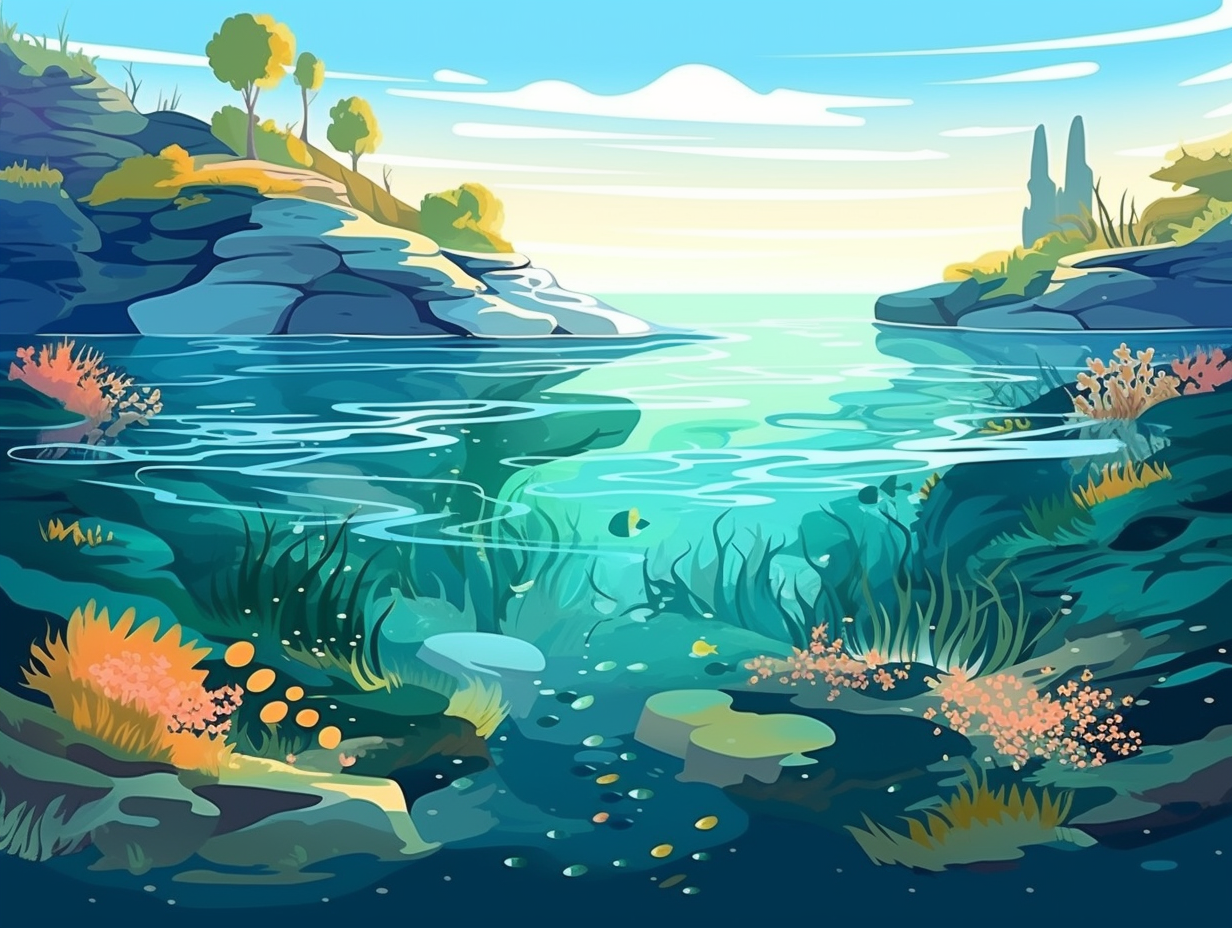11 Amazing Fun Facts About Ocean Basins: Dive into Earth's Hidden Secrets!

1. Challenger Deep: The Ultimate Abyss
Much deeper than your last plunge into the dating pool, and boasting mysteries more profound than a lost car key: the Challenger Deep is the deepest ocean point, reaching around 10,935 meters (35,876 feet) in the Mariana Trench. Its intriguing nomenclature traces back to the HMS Challenger, responsible for first sounding these depths in 1875, making it a thrilling area for scientists and researchers to riddle out the riddles of the abyss.
Source => oceanservice.noaa.gov
2. Pacific Ocean's Moody Novelist Vibes
Feeling deep and mysterious like a moody novelist? Well, Mother Nature beat you to it with a dive into the Challenger Deep: The Pacific Ocean basin holds the world's deepest point, the Mariana Trench's Challenger Deep, plunging over 36,000 feet into the abyss.
Source => oceanliteracy.unesco.org

Dive into the depths of the Mariana Trench and discover the incredible pressure that awaits you, equivalent to having five jumbo jets stacked on top of you! Uncover more mind-blowing ocean facts 🌊
=> Fun Facts about The-Ocean
3. Underwater Easter Egg Hunt: Seamounts
It appears nature has its own Easter egg hunt deep underwater: Ocean basins are brimming with over 100,000 seamounts, yet we've barely peeked at a fraction of them! The serious reveal: These undersea mountains are havens for a multitude of endemic species and serve as veritable "oases of life," boasting greater biodiversity and biomass compared to the surrounding, less impressive seafloor habitats.
Source => oceanexplorer.noaa.gov
4. Ocean's Mount Everest: Mollusks & Mammals Unite
Who needs Mount Everest when you've got underwater skyscrapers? That's right, folks, the ocean floor is home to towering structures that throw the most exclusive block parties for fish and crustaceans: Seamounts, large underwater mountains found in every ocean basin, host 15% to 35% of all endemic species, providing essential habitats for a diverse array of marine life, from mollusks to marine mammals.
Source => pewtrusts.org

5. Crustaceans' Old Faithful: Hydrothermal Vents
Step right up folks, and witness the underwater equivalent of Old Faithful gushing chemically-infused spa treatments fit for the weirdest of crustaceans: hydrothermal vents on the ocean floor can spew mineral-rich water reaching scorching temperatures of 750°F (398.89°C), constructing towering chimneys up to 148 feet (45 meters) high, exclusively sustaining exotic life forms that feast on these chemical banquets in lieu of depending on the sun's energy or photosynthesis.
Source => encyclopedia.com
6. Underwater Mordor: Abyssal Plains' Secrets
Picture this: a vast underwater world perilously similar to that of Mordor, where the all-seeing eye of Sauron would struggle to pierce the impenetrable depths and withstand the crushing weight of its secret realm. Good luck, Frodo: Abyssal plains cover more than 50% of the Earth's surface and lie between 3,000 and 6,000m deep, making them least explored due to darkness and immense pressure. While hosting a treasure trove of biodiversity, they impact ocean carbon cycling and atmospheric CO2 concentrations, with sediment deposition rates in remote areas at a leisurely two to three centimeters per millennium.
Source => en.wikipedia.org
7. Ocean Floor Wave: Mid-Ocean Ridges
Ladies and gents, grab your flippers and snorkels: we're diving into a world where Mother Nature constantly does the wave! Here's a fun fact: mid-ocean ridges perform an ongoing underwater version of "break it down and build it back up," as hot magma rises from the deep to create new oceanic crust, then cools and sinks into the abyss, continuously shaping the ocean floor throughout each dip and shimmy in this millions-of-years-long dance.
Source => nationalgeographic.org
8. Singing Sonar Reveals Deep-Sea Mysteries
Ahoy, oceanographers! Don't let your sonar be lonely; let it sing! With a few cleverly bounced tunes, it might just reveal some deep-sea secrets: Scientists use echo-sounding to map the ocean floor, bouncing sound waves off it and timing the returning echoes. These echoes are received by a transducer, amplified, and recorded on graphic recorders, allowing for continuous line mapping of depths beneath a ship. Different sound frequencies are used for various data, like 12 kHz for seafloor depth and 3.5 kHz for sediment layers. With the help of these harmonious vibrations, they uncovered the mid-ocean ridge system in the Atlantic and Pacific Oceans.
Source => divediscover.whoi.edu
9. Extraterrestrial Life Lessons from Ocean Ridges
When life gives you lemons, some creatures in the deep blue sea say, "Hey, let's make lemonade and invite everyone!": Mid-ocean ridges are home to extraordinary ecosystems, where tube worms, giant clams, and blind shrimp thrive on chemicals from hydrothermal vents, and adapt to extreme pressure, heat, and acidity levels, providing insights into potential extraterrestrial life.
Source => geologyin.com

10. Tectonic Wrestling Champions: Ocean Trenches
Ocean trenches: the ultimate "rock bottom" – literally! They're like the Earth's own stunt doubles, playing out scenes of epic underwater tectonic wrestling: When two feisty tectonic plates come together for a massive arm wrestling competition, the older and denser one gets pushed under its lightweight nemesis, diving right into the mantle. The result? These record-breaking, V-shaped seafloor depressions that go the extra mile in both creating seismic spectacles and attending volcanic afterparties at exotic locations like the Japanese Archipelago, the Aleutian Islands, and the VIP section of the Pacific "Ring of Fire."
Source => whoi.edu
11. Binge-Watching the Dazzling Abyssal Plains
In a world where Netflix marathons just won't cut it, meet the dazzling abyssal plains: a breathtakingly diverse array of life thriving in oxygen-poor waters 3,000 meters deep, influenced by factors like climate change, fishing practices, and ocean fertilization, and sustained by dissolved oxygen from ancient polar melts.
Source => en.wikipedia.org
Related Fun Facts




















